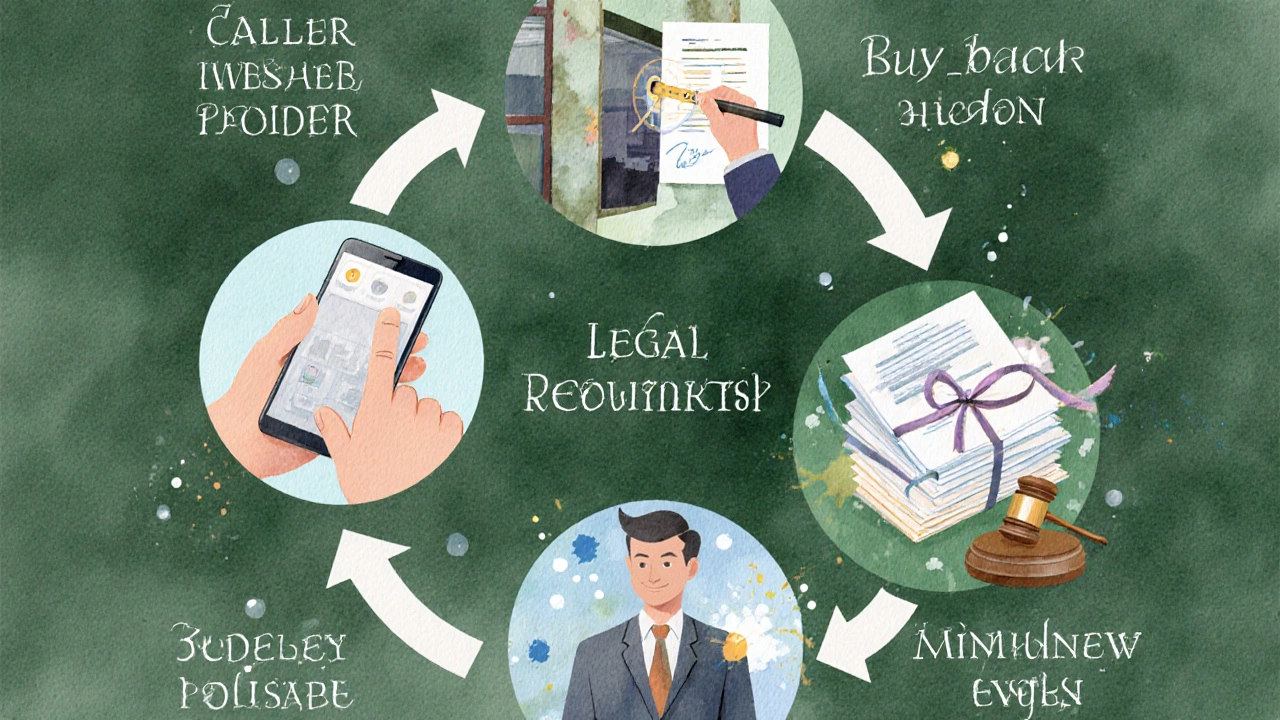Equity Release Buy-Back Cost Calculator
Calculate Your Buy-Back Cost
Enter your details to see the total cost of buying back your home after equity release.
Your Buy-Back Estimate
Important Note: This estimate includes standard fees of £1,200 for legal services and £350 for valuation.
Actual costs may vary based on your provider's specific terms and current market conditions.
Key Considerations
Imagine you unlocked cash from your home with an equity release plan, but now you’ve changed your mind and want to own the property outright again. Is that even possible? The short answer is yes - many schemes let you buy back the equity you sold - but the road back is littered with calculations, fees, and timing tricks. This guide walks you through every step, from the legal basics to the hidden costs, so you can decide whether reclaiming your home makes sense for your situation.
What is Equity Release?
When you Equity Release is a financial product that lets homeowners aged 55 or older access a lump sum or regular income by using the value of their property as security, you’re essentially converting a portion of your home’s equity into cash without having to move. The two most common forms are Lifetime Mortgage, where you keep ownership and the loan plus interest rolls up until you sell or pass away, and Home Reversion Scheme, where you sell a percentage of your property to a provider but retain the right to live there rent‑free.
Can You Buy Back an Equity Release?
Both types of releases can include a “buy‑back” clause, though the details vary. A buy‑back lets you repay the amount you borrowed - plus any accrued interest and fees - and regain full ownership. Not every provider offers this option, and some contracts lock you out for a set period. Checking your specific agreement is the first step.
How the Buy‑Back Process Works
- Contact Your Provider - Reach out to the lender or reversion company. Ask for a full statement showing the current debt, interest accrued, and any early repayment charge.
- Get a Property Valuation - Property Valuation is an independent assessment of your home’s current market value, usually ordered by a chartered surveyor. This figure determines how much you’ll need to settle.
- Calculate the Repayment Figure - The total includes:
- The original loan amount.
- All accrued interest (often compounded annually).
- Any Early Repayment Charge (ERC) a fee for paying the loan off before the agreed term ends.
- Administrative and Legal Fees costs for the solicitor to handle the transfer of ownership back to you.
- Secure Funding - You’ll need cash or a new mortgage to cover the repayment. Many owners refinance with a conventional mortgage, especially if interest rates have fallen since the original release.
- Complete Legal Transfer - Your solicitor works with the provider’s legal team to register the change at the land registry. Once the funds are cleared, the equity release is extinguished and you regain a clean title.
Costs Involved in Buying Back
Buying back isn’t free. Below is a typical cost breakdown (figures are illustrative based on a £200,000 home with a £80,000 lifetime mortgage taken out 5 years ago):
| Item | Estimated Amount |
|---|---|
| Original Loan | £80,000 |
| Accrued Interest (5 years @ 5.5% compounded) | £28,600 |
| Early Repayment Charge (2% of outstanding debt) | £2,172 |
| Legal Fees | £1,200 |
| Valuation Fee | £350 |
| Total Payable | £112,322 |
Even though you’ve only borrowed £80k, the total can easily exceed £110k after just a few years thanks to compounding interest and fees.
Key Factors That Influence Your Decision
- Age - Younger borrowers have more years for interest to compound, making buy‑back pricier.
- Outstanding Debt vs. Property Value - If the loan plus interest now represents a large share of your home’s market value, refinancing may be difficult.
- Interest Rate Environment - Low market rates can make a new mortgage cheaper than the inflated equity‑release balance.
- Regulatory Oversight - The Financial Conduct Authority (FCA) regulates equity release providers in the UK, ensuring they disclose buying‑back rights clearly influences contract terms.
- Personal Circumstances - Health, desire to move, or inheritance plans may outweigh pure financial calculations.

Pros and Cons of Buying Back
| Pros | Cons |
|---|---|
| Regain full ownership and control over your home. | Requires a large cash outlay or a new mortgage. |
| Potentially lower long‑term interest cost versus a growing equity‑release balance. | Early repayment charges can add a few thousand pounds. |
| Eliminates the provider’s claim on your estate, preserving inheritance for heirs. | Legal and valuation fees increase total expense. |
| May improve your credit profile if the equity‑release debt is cleared. | Refinancing risk - if you can’t secure a new mortgage, you may be stuck. |
Alternatives to Buying Back
If the buy‑back price feels out of reach, consider these options before deciding:
- Downsize - Sell the current home, settle the equity‑release debt, and move to a smaller, mortgage‑free property.
- Rent‑to‑Sell - Some providers allow you to rent the home back after payment, giving you time to arrange financing.
- Transfer the Equity Release - In limited cases, you may pass the remaining balance to a family member willing to take over the loan.
- Stay Put - Accept the equity‑release terms and continue living rent‑free for life, especially if the loan’s impact on inheritance is manageable.
Checklist: Are You Ready to Buy Back?
- Obtain a clear statement from your provider showing total repayment amount.
- Arrange an independent valuation to confirm current market value.
- Compare refinancing offers from at least three mortgage lenders.
- Calculate total costs (interest, ERC, legal, valuation) and compare to the equity‑release balance.
- Consult a financial adviser familiar with equity release and mortgage products.
- Ensure you have enough liquidity or borrowing capacity to cover the repayment.
- Check for any contractual lock‑in periods that might penalise early exit.
Final Thoughts
Buying back after an equity release is definitely doable, but it’s not a cheap shortcut. You’ll need to weigh the total repayment against the benefit of full ownership, consider the impact on your estate, and shop around for the most favourable refinancing rates. Armed with the steps and cost breakdown above, you can make an informed decision that protects both your home and your financial future.

Can I repay a lifetime mortgage at any time?
Most lifetime mortgages allow early repayment, but they usually charge an early repayment charge (ERC). The fee is typically a percentage of the outstanding balance, so the earlier you repay, the lower the ERC.
What happens to my home reversion share if I want to buy back?
You’ll need to purchase the provider’s share at the current market value, plus any agreed‑upon interest and fees. The exact formula is set out in your contract, so ask for a full settlement figure.
Is it possible to refinance a property with an existing equity release?
Yes, many lenders will consider a remortgage if the property’s value comfortably exceeds the combined equity‑release debt and the new loan amount. A strong credit score and stable income improve your chances.
Do I need a solicitor to buy back?
A solicitor is essential; they handle the legal transfer, ensure the land registry updates correctly, and verify that all fees are paid. Their cost is part of the overall buy‑back expense.
How long does the buy‑back process take?
From the moment you submit a repayment request to the final land‑registry update, expect 4‑8 weeks. Delays usually stem from valuation disputes or mortgage approval waiting times.
